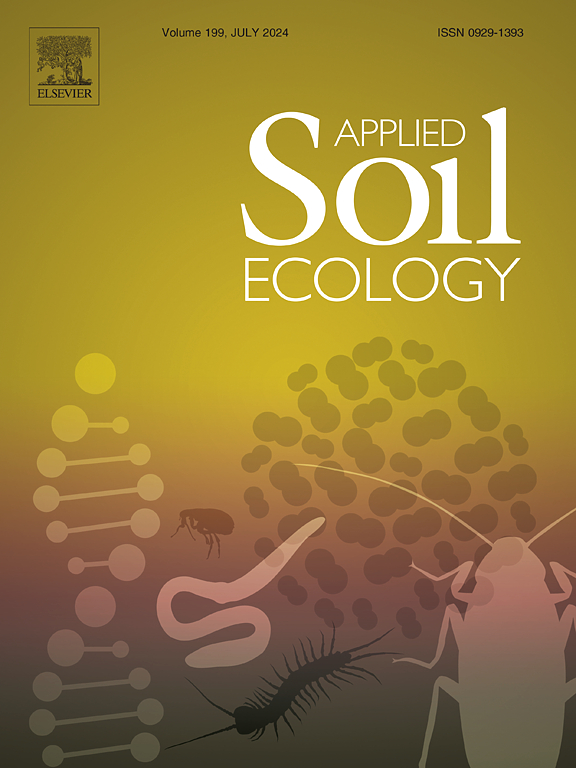The responses of oribatid mites to grazer exclusion in a boreal forest over different time scales
IF 4.8
2区 农林科学
Q1 SOIL SCIENCE
引用次数: 0
Abstract
Oribatid mites (Acari: Oribatida) represent an especially abundant and species-rich group of soil fauna in northern boreal forests. They contribute significantly to the complexity of soil food webs, nutrient cycling and organic matter decomposition. Thus, their role in ecosystem functioning may be pronounced, and consequently, understanding their responses to environmental changes is important. Northern boreal forests often have patchy ground vegetation – i.e., the dominance of lichens vs mosses and dwarf shrubs varies – and are affected by reindeer (Rangifer tarandus tarandus L.) that can impact the abiotic and biotic environment via eating plants, fertilization, and trampling. Here, we studied how differences in reindeer grazing affect oribatid mite community composition, feeding guilds, and life traits and whether the responses of Oribatida depend on the habitat type. We did this by comparing reindeer grazed areas with short-term and long-term ungrazed areas in sunlit, lichen-dominated and in shaded, moss and dwarf shrub-dominated habitats of an oligotrophic Scots pine forest in NE Finland. Grazing treatments affected oribatid mite species composition and these effects depended on the habitat. For example, in the sunlit habitats, the short-term ungrazed treatment benefitted Chamobates pusillus, while the long-term ungrazed treatment benefitted Carabodes labyrinthicus. On the contrary, grazing treatments did not induce any significant differences in the abundances of feeding guilds and life traits. To conclude, we propose that the cessation of reindeer grazing can affect the species composition of oribatid mites over different time spans by impacting the abundance of less common oribatid species, while ecological functions associated with different ecological and life traits of oribatid mites may remain stable under changing reindeer grazing.
求助全文
约1分钟内获得全文
求助全文
来源期刊

Applied Soil Ecology
农林科学-土壤科学
CiteScore
9.70
自引率
4.20%
发文量
363
审稿时长
5.3 months
期刊介绍:
Applied Soil Ecology addresses the role of soil organisms and their interactions in relation to: sustainability and productivity, nutrient cycling and other soil processes, the maintenance of soil functions, the impact of human activities on soil ecosystems and bio(techno)logical control of soil-inhabiting pests, diseases and weeds.
 求助内容:
求助内容: 应助结果提醒方式:
应助结果提醒方式:


